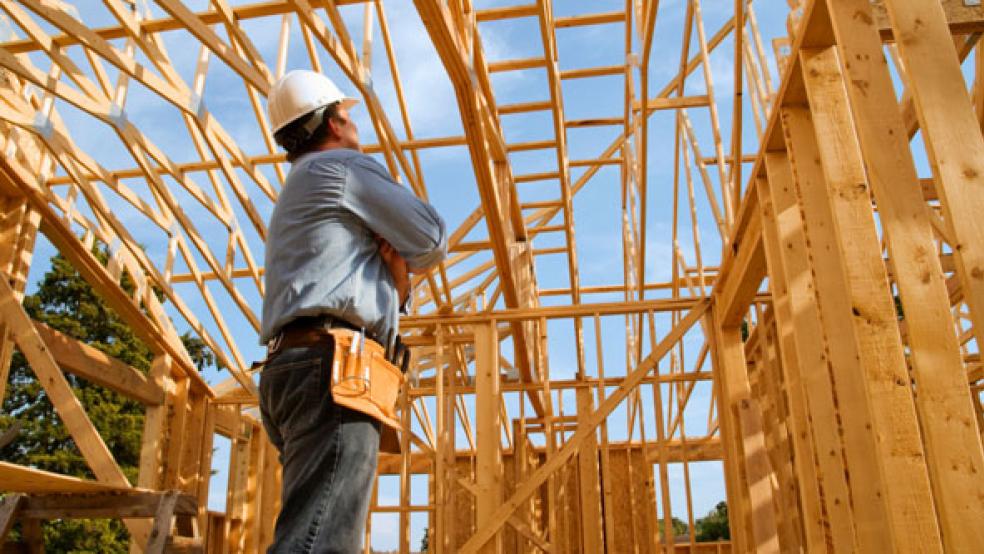U.S. housing starts jumped to their highest level in nearly 7-1/2 years in April and building permits soared, hopeful signs for an economy that is struggling to regain strong momentum after a dismal first quarter.
The strength in housing is in stark contrast with weakness in consumption, business spending and manufacturing, which has prompted economists to lower their second-quarter growth estimates and raised doubts that the Federal Reserve will raise interest rates before the end of 2015.
"The stronger starts and permits data suggests that some real gauges of economic activity may finally be starting to accelerate during the spring, increasing optimism that the Fed may be on track to hike rates later this year," said Gennadiy Goldberg, an economist at TD Securities in New York.
The U.S. central bank has kept its short-term interest rate near zero since December 2008.
Groundbreaking surged 20.2 percent to a seasonally adjusted annual pace of 1.14 million units, the highest since November 2007, the Commerce Department said on Tuesday. The percent increase was the biggest since February 1991.
Adding to the report's strong tenor, March's starts were sharply revised higher. Groundbreaking for single-family homes, which accounts for the largest share of the market, hit their highest level since January 2008. Starts for the volatile multifamily segment also recorded hefty gains last month.
While April's sharp acceleration in starts likely reflected pent-up demand during a harsh winter, a 10.1 percent jump in permits for future home construction to a near seven-year high 1.14 million-unit rate indicated the rebound was sustainable.
Home building is being boosted by a solid gains in household formation as more young adults find employment and very tight housing inventories. Economists had forecast groundbreaking increasing to only a 1.02 million-unit pace and permits rising to just a 1.06 million-unit rate last month.
The dollar rallied against a basket of currencies, while prices for U.S. government debt fell. D.R. Horton Inc (DHI.N), the largest U.S. homebuilder, advanced 0.90 percent. Lennar Corp (LEN.N), the nation's second-largest homebuilder, rose 0.26 percent.
The S&P homebuilding index .SPLRCHOME rose 0.60 percent, outperforming the broad market, which was held back by weak financial results from Walmart (WMT.N).
The world's largest retailer said its customers were using their tax refunds and savings at the pump to pay down debt rather than spend on discretionary items, confirming a trend flagged by U.S. retail sales data since December.
HOUSING FIRMING
The firming housing market buoyed profits at Home Depot Inc (HD.N). The world's largest home improvement chain by sales reported better-than-expected quarterly profit and sales, and raised its full-year sales and profit forecast on Tuesday.
The signs of strength in housing fit in with views a rebound is under way. There is cautious optimism that housing, which has seen an acceleration in home sales and prices, will combine with a tightening labor market to lift the economy out of the soft patch hit at the start of the year.
"The strong rebound in housing starts confirmed expectations for housing to accelerate substantially in the second quarter and be a stand-out growth contributor amid otherwise sluggish indications for a pickup in GDP growth," said Ted Wieseman, an economist at Morgan Stanley in New York.
Based on April's starts data, economists lifted their second-quarter growth estimates by at least one-tenth of a percentage point to between a 1.7 percent and 2.7 percent annual pace.
The government reported last month that gross domestic product grew at a 0.2 percent rate in the first quarter. But weak March trade and inventories data suggested the economyactually contracted.
The government will publish its revised GDP data next week. Output at the start of the year was held down by the harsh winter, a strong dollar, a ports labor dispute and deep energy spending cuts in the first quarter.
In April, groundbreaking vaulted 85.9 percent in the Northeast. There were also outsized gains in the Midwest and the West. But starts fell 1.8 percent in the South, where most of the home building takes place.
Single-family homes groundbreaking gained 16.7 percent. Starts for the multi-family homes segment increased 27.2 percent. Single-family permits increased 3.7 percent last month. Multi-family permits surged 20.5 percent.




